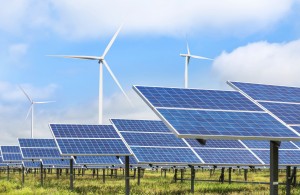On 23 October, 85 projects in 18 EU member States were invited to prepare for funding. Estonia and Slovakia were invited for the first time. The projects were selected from a 2023 call for proposals and received 337 applications, of which 283 were eligible and evaluated.
For the first time, the 2023 call for proposals was awarded to projects of different sizes (large, medium and small, as well as pilot projects) with a focus on cleantech manufacturing.This is the largest since the launch of the Innovation Fund in 2020, raising the total amount of support to €12 billion and increasing the number of projects by 70% selected projects are located in 18 countries:Belgium, Denmark, Germany, Estonia, Greece, Spain, France, Croatia, Italy, Hungary, Netherlands, Austria, Poland, Portugal, Slovakia, Finland, Sweden and Norway.
Some of the notable projects include a surface PV project in Belgium, a solar modules plant and storage facility for the malt industry in Croatia, and a 1.5 GW heterogeneous PV module plant in Spain, which will be developed by Trina Solar (Luxembourg) Holdings, a subsidiary of Trina Solar. The selected applicants will sign the funding agreement in the first quarter of 2025, and the completed projects will be operational in 2030. The European Commission said that promising but currently immature projects will also receive project development assistance from the European Investment Bank. In the third quarter of 2024, solar generated 94 TWh of electricity in the European electricity market. This is the highest number of solar power generation ever and a 15% increase over the third quarter of 2023. The largest contributors are Germany, Italy and Spain, which generate 24.8 TWh, 16.9 TWh and 9.7 TWh respectively.
In the third quarter of 2024, wind power generated the second best amount on record, totaling 104.7 TWh. Renewable energy (including solar, wind, biomass, hydropower and waste) accounted for 50.8% of total electricity generation in Europe between July and September. The remaining generation consists of nuclear energy, which accounts for a record high 25.3% of total generation, followed by natural gas (13.4%), coal/lignite (10.2%) and oil (0.3%).
Post time: Oct-24-2024
